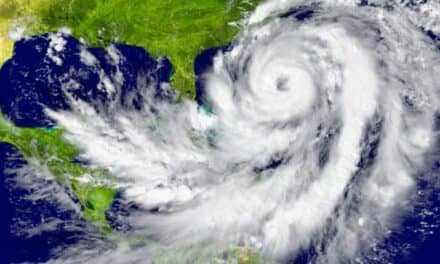The US Department of Health and Human Services (HHS) has launched the HHS emPower map, an interactive online tool designed to aid community health agencies and emergency management officials in disaster preparedness as they plan ahead to meet the emergency needs of community residents who rely on electrically powered medical and assistive equipment to live independently at home.
The new tool is sponsored by the HHS Office of the Assistant Secretary for Preparedness and Response (ASPR) in its ongoing efforts to support community resilience and build national health security. According to the HHS, more than 1.6 million Medicare fee-for-service beneficiaries nationwide rely on electricity-dependent medical and assistive equipment, such as oxygen concentrators, ventilators, and wheelchairs.
“For people who rely on electricity-dependent medical equipment, prolonged power outages can mean life or death,” said Nicole Lurie, MD, MSPH, the HHS assistant secretary for preparedness and response. “This tool helps communities better anticipate, plan for, and respond to these unique needs of this population and improve resilience for the entire community before and after disasters.”
The HHS emPower map, which is available on the HHS website, shows the monthly total number of Medicare fee-for-service beneficiaries’ claims for electricity-dependent equipment at the national, state, territory, county, and zip code levels. The tool incorporates the data with real-time severe weather tracking services from the National Oceanic and Atmospheric Administration in a Geographic Information System (GIS).
The integrated data accessible through the HHS emPower map is intended to help community organizations, including hospitals, first responders, and electric utility officials, work with health officials to prevent health impacts of prolonged power outages due to storms and other disasters on vulnerable residents. For example, the HHS emPower map could be used by electric utility companies to determine priority areas for restoring electrical service based on the location of the largest concentrations of electricity-dependent individuals. This could assist hospitals, health care coalitions, and Emergency Medical Services in planning better for surges in medical services.
Emergency planners could also use the tool to anticipate whether emergency shelters might experience greater electricity demand due to higher concentrations of electricity-dependent Medicare beneficiaries nearby. Local officials could estimate more accurate assistance needs for transportation and evacuation when local mass transit systems are affected by prolonged power outages after disasters.
While the information in the HHS emPower map is presented in a way that protects patient privacy, in an emergency, additional information can be made available to a health department to facilitate life-saving emergency response in a manner consistent with the Health Information Portability and Accountability Act and the Federal Privacy Act.
For more information about the HHS emPower map, which was developed collaboratively by ASPR and the Centers for Medicare & Medicaid Services, visit the HHS website.
Additional information about disaster preparedness as it relates to healthcare and HTM is covered in a May 22, 2015 article in 24×7.






